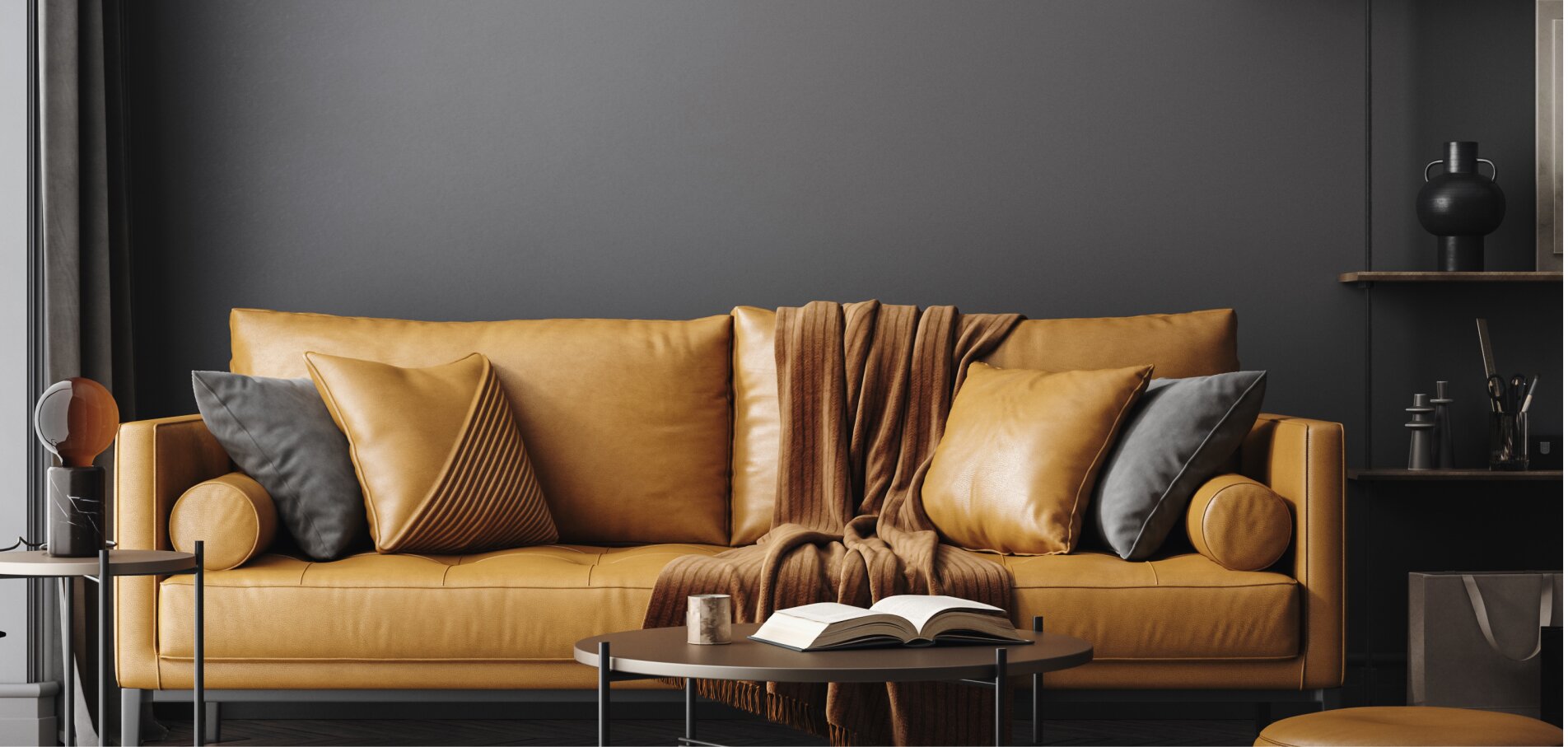You're on the list
By signing up, you agree to receive email marketing.


Leather has a well-deserved reputation as one of the most durable furniture materials. It’s a popular choice for pet owners, parents, or those just looking for furniture able to withstand spills and crumbs.
While leather holds up better than other materials, it’s not invincible. You still need to clean your furniture regularly to keep it in top shape and smelling fresh. This guide covers everything you need to know about how to clean leather furniture.
Manufacturers use several types of leather and leather-like products to create furniture, including:
This high-quality leather is made by dying tanned animal hides with soluble dyes. This process makes the natural markings and wrinkles stand out, so every hide is unique. Aniline leather is often used for luxurious couches, armchairs, and dining chairs.
Semi-aniline dye adds a protective layer to the leather. This variety is more affordable, durable, and stain-resistant than aniline leather. However, the semi-aniline has pigments that disguise the natural texture, so some people view it as less authentic.
This popular material is made from the innermost hide of calves, sheep, and other animals. Suede has a very soft, velvety texture, so it’s often used for upholstery. However, suede is less durable than full leather and requires more frequent cleaning.
Furniture manufacturers and retailers typically include the type of leather in product descriptions. They may also share guides for how to clean leather recliners and other furniture they’ve produced.
You can also test the leather by placing a drop of water on the surface. Aniline leather and suede soak up water immediately, while semi-aniline absorbs more slowly. Fake leather doesn’t absorb water at all.
Like all furniture, leather upholstery requires regular cleaning and maintenance.
Clean high-traffic leather or suede furniture every one to two weeks. You should also clean infrequently used furniture every two to four weeks to remove dust and dirt.
You’ll also need to condition your leather furniture every six months. This process will keep the material soft, pliable, and shiny.
You know it's best to clean them, but how to clean leather chairs and couches without damaging them? The good news is you don’t need to invest in expensive products to keep your leather furniture spotless. However, you must choose your cleaning materials carefully to avoid staining or harming the leather.
Here are a few leather-safe cleaning products:
Mild dish soap mixed with water
Saddle soap (not safe for suede)
Commercial leather cleaner
You can also buy leather cleaner wipes. These products let you spot-clean your furniture if you drip something onto it or need to wipe away muddy paw prints. You can also use wipes to freshen up your upholstery quickly before guests arrive.
Once you’ve got the right cleaning supplies, you’re ready to clean leather dining chairs, couches, rugs, recliners, and more.
Start by wiping down the furniture with a clean, damp microfiber cloth every one to two weeks. You can also use a vacuum cleaner with a soft brush attachment. These tools remove dust and crumbs from the furniture without damaging the leather.
Deep-clean your leather furniture at least once a month to remove stains and prevent odor. During these sessions, use saddle soap or a mixture of lukewarm water and mild dish soap. Dip a cloth in the soap and rub it gently on the leather until it’s spotless.
After you wipe down the furniture, dry it thoroughly with a soft cloth or paper towel. This step prevents water damage and mold.
Condition your leather furniture every six months to keep it supple and prevent cracking. Many retailers sell special conditioners designed to preserve the leather’s smooth appearance and integrity.
Look for natural, oil-based conditioners with ingredients like beeswax and lanolin. These products restore the leather’s moisture and add a protective barrier to the surface. Some conditioners also offer UV protection to prevent color fading and sun damage.
Once you’ve chosen a leather conditioner, follow these simple steps:
Thoroughly clean the furniture with leather cleaner or soap.
Let the leather air dry for at least 24 hours.
Spot test the conditioner in an inconspicuous area. Don’t use the product if it discolors the leather or alters the texture.
Place a few drops of the conditioner on a clean cloth and rub it on the leather in a circular motion. Cover the entire surface of the furniture with the conditioner, applying more product as needed.
Wait another 24 hours for the conditioner to penetrate the leather.
Buff the furniture with a soft cloth for a shiny finish.
If you want to learn how to clean leather rugs and furniture, you’ll need to know which products to avoid. Stay away from these cleaning materials to prevent permanent damage:
Alcohol-based cleaners
Baking soda
Harsh cleaners like bleach
Vinegar
Wood furniture polish
These products absorb into the leather and could cause discoloration or cracking.
A leather couch is often one of the most used furniture pieces in a home. To keep it in top condition, vacuum it at least weekly.
A waterproof cover can protect your leather couch from dirty pets and spilled snacks. Choose a lightweight, washable cover for maximum convenience.
Additionally, you should flip and rotate the cushions at least once a month. This process will help them wear evenly and maintain their shape over the life of the couch.
Leather furniture is a timeless staple that fits into any aesthetic. Keep your furniture in pristine condition by regularly cleaning and conditioning it. Choose high-quality products and apply them with care to protect your furniture. The time you invest in maintaining your upholstery will allow you to enjoy beautiful, clean leather furniture for years.
You're on the list
By signing up, you agree to receive email marketing.